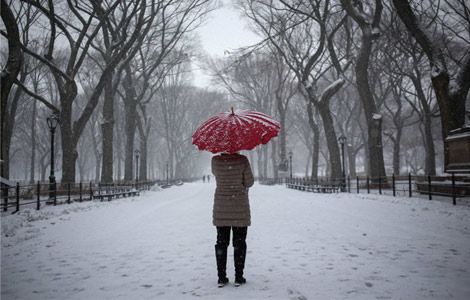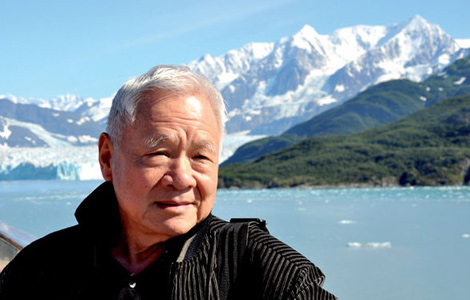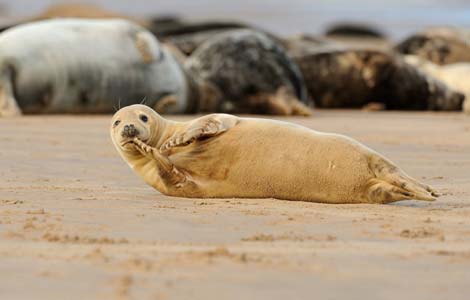How US led the protection movement
Updated: 2013-12-19 09:26
By Chen Jia in San Francisco (China Daily)
|
||||||||
The artist George Catlin (1796-1872) is usually credited with inventing the concept of national parks. During a trip to Dakota in 1832, he became concerned about the impact of westward expansion on Native Americans and their civilization, wildlife and the wilderness.
Yellowstone National Park, the first in the United States, was established in 1872. It was followed by Yosemite National Park, the Grand Canyon National Park, and the Hawaii Volcanoes National Park. However, it wasn't until 1916 that the National Park Service was created to manage them.
"The basic mission of the National Park Service is to preserve and protect the cultural and natural resources within a park for current and future generations and also to provide enjoyment for the many visitors who come to these parks," said James E. Miculka, adjunct professor at the department of recreation, park and tourism sciences at Texas A&M University.
The US National Park System comprises more than 400 areas of wilderness. Most are unfenced and an unlimited number of visitors are allowed, but, to prevent resources becoming exhausted and to ensure the quality of the visitor's experience, the services and activities are tailored to fit the capacity of each specific park and its features, said Patrick Tierney, professor and chairman at the department of recreation, parks, and tourism at San Francisco State University.
For example, anyone wishing to raft the Colorado River in the Grand Canyon needs to obtain a permit, but with 110 applicants for each permit it could take 10 to 15 years before an applicant is granted one.
The National Park Service is supported through the federal budget, although it obtains additional funds through foundations, support groups and donations.
About 95 percent of the budget for Yosemite National Park comes from the federal government, according to Tierney. Park entrance fees must be given to the federal treasury and may be reallocated by Congress, but because the parks are subsidized, the fees account for a relatively small percentage of their budgets.
Development battles loom
Miculka's colleague, Professor Jim Gramann, said: "The National Park Service prefers to use the term 'visitor' instead of 'tourist.' Tourists travel from their homes to a destination they don't own. They are 'guests' at their destination. But all Americans are the owners of the national parks, even if they don't visit them."
Having visited China several times, Miculka has seen the challenges facing the country's parks and protected areas. He said battles over economic development and the need for the preservation of green spaces and history occur all over the world and people must decide what's important, then strike a balance and be prepared to compromise to preserve parks and protected areas.
"There are successful attempts at preservation and protection in places such as panda reserves, the Terracotta Army in Xi'an, and the palaces in Beijing. I doubt that any of them would be destroyed to make room for a shopping center. The same attitude needs to spread to China's other protected natural and cultural areas. The concept of parks and preservation needs to be marketed to the general public so they can see, understand and relate to the needs of these special places," he said.
For Philip Wang, associate professor at the recreation, park and tourism management department under Kent State University in Ohio, parks can only succeed if they are left undisturbed.
"Urban encroachment is a challenge to the national parks (in the US) and I fear that it will be worse in China because of the population pressure. The preservation of nature through the national parks is the best idea America has come up with. By implication, this idea is better than democracy or technology," he added.
Contact the writer at chenjia@chinadaily.com.cn

 Parents urged to supervise children's TV-viewing habits
Parents urged to supervise children's TV-viewing habits
 Jazzing up Beijing
Jazzing up Beijing
 Snow storm wallops NE USA
Snow storm wallops NE USA Russia to bail out Ukraine for $15 billion
Russia to bail out Ukraine for $15 billion
 Fatal tiger attack 'points to flaws in zoo management'
Fatal tiger attack 'points to flaws in zoo management'
 Merkel sworn in as chancellor for a third term
Merkel sworn in as chancellor for a third term
 Life in poetry
Life in poetry
 US first lady visits children in medical center
US first lady visits children in medical center
Most Viewed
Editor's Picks

|

|

|

|

|

|
Today's Top News
China’s leaders must lead on clean energy: report
Treasure Island still radioactive?
Military plays down 'near-miss' between warships
Fed to cut bond purchases by $10B
Overseas investing sees large jump
China expands research in Antarctica
Cloud seeding plans spark debate
Russia to bail out Ukraine for $15 billion
US Weekly

|

|








